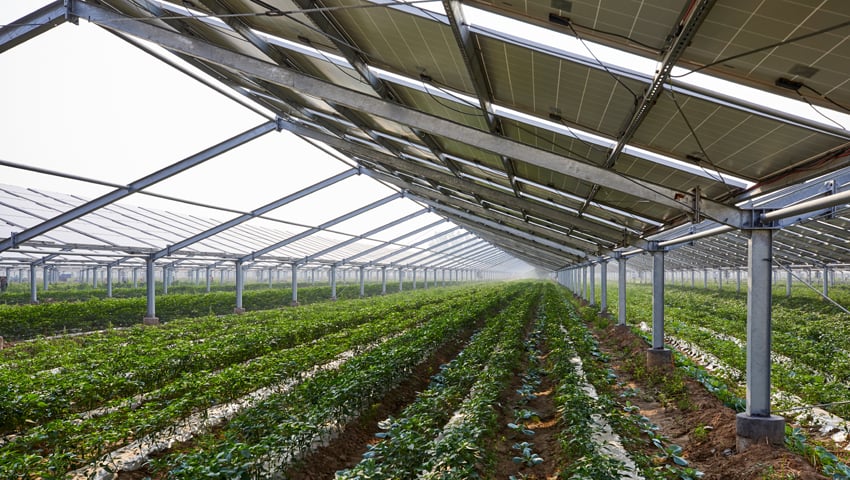Article by George Hall, Head of Solar at Conrad Energy
Food security is unquestionably hugely important – but when that concern manifests as opposition to the expansion of solar energy, it is also misplaced.
So it is troubling that the government last month made an effort to limit the expansion of solar energy on ‘high-quality’ agricultural land, suggesting that a feasible alternative instead would be to concentrate on roof-based solar.
Although roof-based solar has an important role to play in the energy transition, it is not a like-for-like substitute for ground-based solar and should not be seen as such.
Happily, there is no inherent conflict between the expansion of solar power and the protection of agricultural land.
Indeed, far from presenting farmers, planners, local authorities and other stakeholders with an either-or choice, solar energy offers a number of tangible benefits to agricultural land and farmers, ranging from the financial to the ecological.
How solar panels can help farmers
The mindset that solar panels are bad for farming rests on the assumption that the two uses of the land are incompatible. That could not be further from the truth – it is not only possible to install solar panels on a working farm, it can also help the farm to run more efficiently.
Solar power provides a source of inexpensive, low carbon, renewable electricity for farms and through Power Purchase Agreements, farmers may be able to use the electricity generated on-site without even needing to pay the upfront costs of installing solar panels.
Another alternative is to rent a portion of their land to energy companies. This offers an often vital source of income, with the margins in agricultural commodities increasingly tight. This revenue can be reinvested into the running of the farm, increasing the value and output of agricultural activities.
Solar integrated with food production
Furthermore, as was quite correctly pointed out by Sophy Fearnley-Whittingstall and Trent Hendricks on the Farm Gate podcast, solar arrays can offer real agricultural benefits, and vice versa. A good example of this is the growing prevalence of agrivoltaics. In the broadest sense, agrivoltaics refers to dual-use technology, for instance solar panel arrays that are mounted above crops or livestock, offering protection from the elements whilst also generating solar power.
Setting aside fields to host solar arrays can also help to restore land that has been heavily used for intensive mono-cropping, with benefits for soil nutrients and biodiversity, whilst livestock such as sheep can be used to manage vegetation on solar sites.
Planting crops beneath solar panels also benefits the panels, helping to ensure they remain cool and therefore more productive. Further, because solar arrays can be erected within weeks and have a low impact on the land, which can be returned to its former use when the solar farm reaches the end of its life, the disruption to agricultural production is typically minimal.
Is the ‘solarcoaster’ changing tracks?
The gradual withdrawal of government subsidies has changed the face of solar power. Withdrawing these subsidies has not reversed ongoing growth in the UK – with solar capacity recently reaching a record high – but it has had a significant effect on the way that solar power is delivered.
Grid connections also remain a significant challenge with Solar Energy UK highlighting the ‘lack of distribution network capacity [as] a major limitation’ on the further deployment of solar power.
Without further investment into grid infrastructure, this limitation will remain a serious obstacle, including for farmers who are looking to erect solar arrays on their land. That includes for private grid connections and steps will need to be taken to address that if we are to maximise the benefits of solar power. One of the impacts of these developments is that smaller solar farms, in particular community projects, have become comparatively uncommon and larger projects increasingly predominant.
It is important that the solar industry recognises this. If vast solar farms cover large areas of countryside, it is almost inevitable that this will arouse opposition.
The key is that balance is maintained between expanding the use of solar power across the UK to keep on track with net zero targets and avoiding excessive construction in the countryside. Making use of working farmland offers a way of achieving that balance, whilst also creating benefits for farmland and farmers alike.
As the technology continues to become more efficient and affordable, there is real scope for further development of solar power across the UK. Farms will have a vital role to play in that, and thankfully, will also be well-placed to reap the rewards.
Article by George Hall, Head of Solar at Conrad Energy
